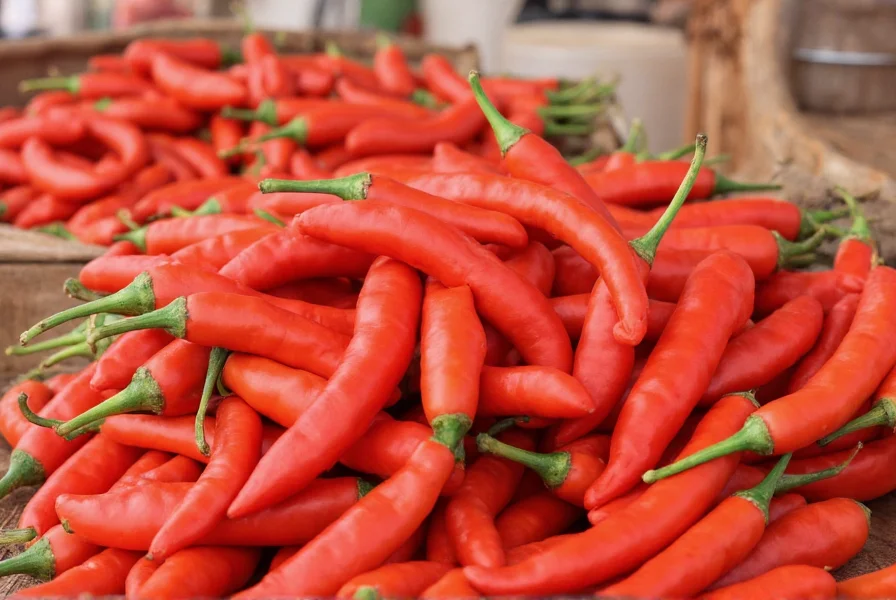When people search for “cane pepper,” they’re almost always seeking information about cayenne pepper. This linguistic mix-up happens frequently due to the similar pronunciation of “cayenne” (ky-an) and “cane.” Understanding this distinction is crucial for anyone exploring spicy ingredients, cooking techniques, or potential health benefits of hot peppers.
Why the Confusion Between Cane Pepper and Cayenne Pepper?
The term “cane pepper” doesn’t exist in botanical classification systems or culinary references. This common search error occurs because:
- Phonetic similarity: “Cayenne” is pronounced “ky-an”, which sounds similar to “cane” when spoken quickly
- Regional dialects: Some accents may blur the distinction between these terms
- Auto-correct errors: Digital keyboards often change “cayenne” to “cane”
- Limited culinary knowledge: Those unfamiliar with spice terminology may not recognize the correct spelling
Food historians note that cayenne pepper gets its name from the city of Cayenne in French Guiana, where the pepper was historically cultivated and traded. The term has nothing to do with sugar cane or any other “cane” plant.

What Is Cayenne Pepper, Really?
Cayenne pepper (Capsicum annuum) belongs to the nightshade family and measures 30,000–50,000 Scoville Heat Units (SHU), placing it firmly in the hot pepper category. These slender, tapered peppers typically grow 2–5 inches long and turn from green to bright red as they mature.
Unlike the non-existent “cane pepper,” cayenne has well-documented characteristics:
| Characteristic | Description |
|---|---|
| Botanical Name | Capsicum annuum var. annuum |
| Heat Level | 30,000–50,000 SHU |
| Flavor Profile | Sharp, pungent, with citrusy undertones |
| Common Forms | Fresh, dried, powdered, extract |
| Primary Use | Culinary spice, traditional medicine |
Culinary Applications of Cayenne Pepper
Chefs worldwide rely on cayenne pepper for its distinctive heat and flavor. Unlike the mythical “cane pepper,” authentic cayenne has specific culinary applications:
- Heat control: A pinch can transform dishes without overwhelming other flavors
- Flavor enhancement: Complements tomatoes, chocolate, and citrus in unexpected ways
- Regional specialties: Essential in Cajun/Creole cooking, Southwest cuisine, and many Asian dishes
- Versatile forms: Used fresh in salsas, dried in rubs, or powdered in spice blends
When substituting for other hot peppers, remember that cayenne provides more consistent heat than jalapeños but less intensity than habaneros. The confusion around “cane pepper” often leads to incorrect substitutions in recipes.
Health Benefits Supported by Research
The active compound in cayenne pepper, capsaicin, has been extensively studied. Research shows potential benefits including:
- Pain relief: Topical capsaicin creams reduce nerve pain by depleting substance P
- Metabolism boost: May increase energy expenditure by 50 calories daily according to some studies
- Circulation improvement: Causes temporary vasodilation that may benefit cardiovascular health
- Digestive support: Stimulates digestive enzyme production in moderate amounts
It’s important to note that these benefits apply to actual cayenne pepper, not the non-existent “cane pepper.” Consuming excessive amounts can cause gastrointestinal distress, especially for those unaccustomed to spicy foods.

Selecting and Storing Authentic Cayenne Pepper
When shopping for cayenne pepper, look for these quality indicators:
- Fresh peppers: Should be firm, glossy, and uniformly colored without wrinkles
- Dried peppers: Deep red color with no signs of moisture or mold
- Ground powder: Vibrant red color (dull brown indicates age or poor quality)
Proper storage extends shelf life significantly:
- Fresh cayenne: Store in refrigerator crisper drawer for 2–3 weeks
- Dried whole peppers: Keep in airtight container away from light and moisture for 6–12 months
- Ground cayenne: Best used within 6 months for maximum flavor and potency
Many people searching for “cane pepper” end up with inferior products because they don’t know what to look for in authentic cayenne.
Frequently Asked Questions
Is cane pepper the same as cayenne pepper?
No, “cane pepper” is not a recognized term in culinary or botanical contexts. This is almost always a misspelling or mishearing of “cayenne pepper.” Cayenne pepper is a specific hot chili variety (Capsicum annuum) with documented characteristics, while “cane pepper” doesn't refer to any known pepper variety.
Why do people say cane pepper instead of cayenne?
The confusion occurs because “cayenne” (pronounced ky-AN) sounds similar to “cane” when spoken quickly. Regional accents, auto-correct errors on digital devices, and limited familiarity with spice terminology all contribute to this common misunderstanding. Food historians confirm the term comes from Cayenne, the capital of French Guiana, not from any “cane” plant.
What can I use if I can't find cayenne pepper?
If you're looking for cayenne pepper (not the non-existent “cane pepper”), suitable substitutes include: crushed red pepper flakes (use 1:1 ratio), hot paprika (use 1.5x amount), or a pinch of red pepper flakes mixed with a dash of paprika. For heat without the specific flavor, tabasco sauce or sriracha can work in liquid-based recipes. Remember that cayenne provides consistent medium-high heat, so adjust substitutes accordingly.
Does cayenne pepper have health benefits?
Yes, authentic cayenne pepper contains capsaicin, which research shows may provide several health benefits including temporary pain relief (through topical creams), modest metabolic boost, improved circulation, and digestive support. These benefits apply specifically to cayenne pepper, not to any hypothetical “cane pepper.” As with any spicy food, consume in moderation, especially if you have gastrointestinal sensitivities.
How can I tell if I'm buying real cayenne pepper?
Look for these indicators of authentic cayenne pepper: fresh peppers should be firm and glossy red; dried peppers maintain deep color without mold; ground powder has vibrant red color (not dull brown). Reputable brands list “cayenne pepper” or “hot red pepper” as the sole ingredient. Be wary of products labeled “cane pepper,” as this indicates the seller may not understand proper spice terminology, potentially signaling lower quality control.











 浙公网安备
33010002000092号
浙公网安备
33010002000092号 浙B2-20120091-4
浙B2-20120091-4